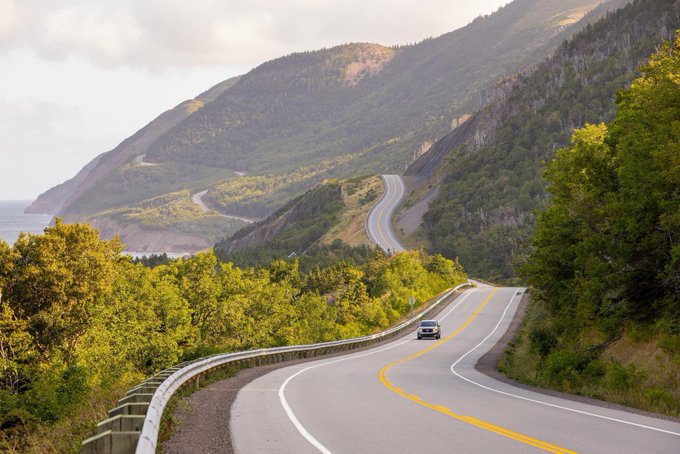Canada, the second-largest country in the world, boasts an extensive and efficient highway infrastructure. From coast to coast, its highways stretch across vast landscapes, connecting bustling cities, serene towns, and scenic attractions. For those curious about the highways that crisscross this great nation, here are ten captivating facts.
1. The Trans-Canada highway is among the world’s longest national highways
Spanning approximately 7,821 kilometres from Victoria, British Columbia, to St. John’s, Newfoundland, the Trans-Canada Highway holds the distinction of being one of the world’s longest continuous road systems. Established in 1962, it links all ten Canadian provinces, providing a critical transportation artery for both passengers and freight.
2. The history of Canadian highways dates back over a century
While automobiles have become mainstream in the 20th century, Canada’s journey with highways began in the late 19th century. Some of the country’s earliest roads were once Indigenous trails or fur trade routes, which were later converted to cater to wagons and, eventually, motor vehicles.
3. Highway infrastructure plays a key role in canada’s economy
Given Canada’s vast expanse, the highway network is crucial for commerce. Trucking alone accounts for a significant portion of Canada-U.S. trade. Notably, certain border crossings, like the Ambassador Bridge, witness a massive volume of trucks transporting goods daily.
4. Emphasis on sustainable infrastructure
Canada is at the forefront of developing green highway infrastructure. Efforts include building wildlife overpasses in places like Banff National Park, allowing animals to cross highways safely, and research into more sustainable road materials to reduce the carbon footprint.
5. Canada’s northernmost highway: The dempster highway
Connecting the Klondike Highway in Yukon to Inuvik in the Northwest Territories, the Dempster Highway is Canada’s northernmost public road. Opened in 1979, it traverses Arctic tundra, offering drivers a unique experience amidst pristine landscapes.
6. The Highway of Tears is a somber reminder
Stretching along Highway 16 in British Columbia, the Highway of Tears references a series of unsolved murders and disappearances, many of them Indigenous women. Efforts have been made in recent years to improve transportation options and safety along this stretch.
7. Highway 401 in Ontario is one of North America’s busiest highways
Especially through the section known as the King’s Highway, this stretch can see over 500,000 vehicles per day, making it one of the continent’s most congested. It is crucial for transport between major Canadian cities and US border crossings.
8. The infrastructure also includes ice roads
In Canada’s far north, during the harsh winters, some roads become passable only when rivers and lakes freeze solid. These ‘ice roads’ are vital lifelines for remote communities, facilitating the delivery of goods and essential supplies.
9. Investment in highway infrastructure is continuous
Given the sheer size of Canada and the wear-and-tear from extreme weather conditions, maintenance and development of highways are ongoing. The government invests billions annually in infrastructure projects to ensure that the network remains robust and efficient.
10. Unique features dot the Canadian highway landscape
From the gravity-defying Magnetic Hill in New Brunswick, where cars seem to roll uphill, to the picturesque Sea to Sky Highway in British Columbia, offering breathtaking views of the Pacific coastline, Canada’s highways present a myriad of unique experiences for travelers.
READ ALSO: Which are the top 10 longest road tunnels in the world?
Canada’s highway infrastructure is not just about asphalt and concrete; it is a reflection of the country’s history, geography, and ethos. From the world-renowned Trans-Canada Highway to the crucial ice roads in the north, these routes facilitate connection, commerce, and exploration. As you drive along any of Canada’s highways, you’re not just on a road; you’re on a journey through a rich tapestry of stories, landscapes, and experiences.

